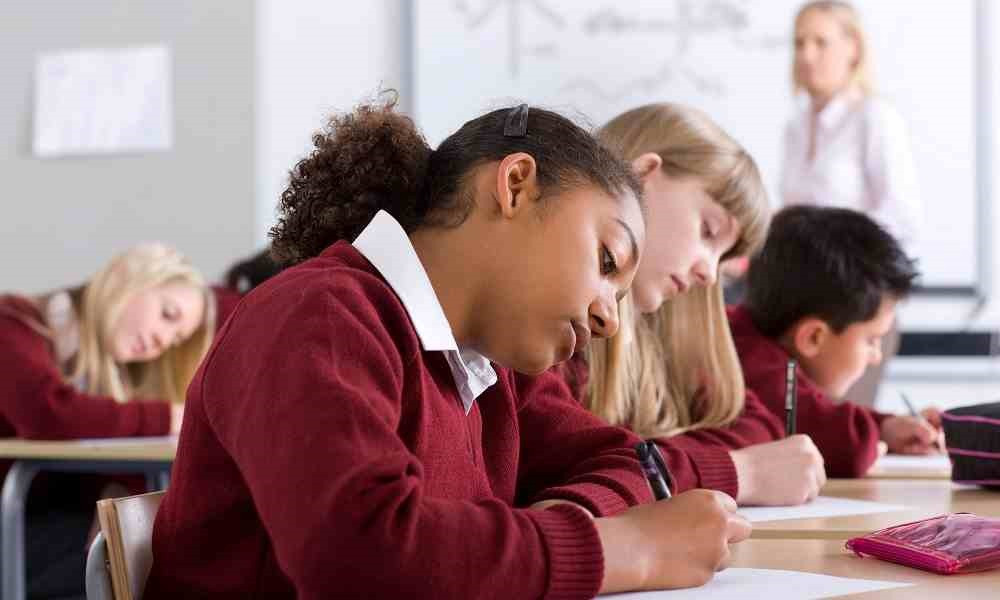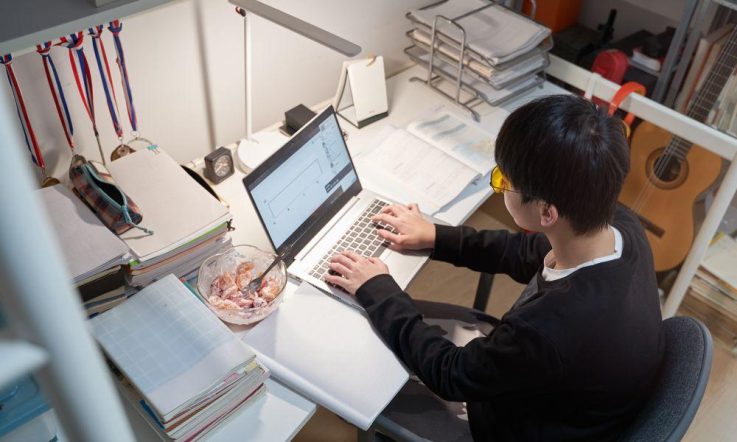The Australian Council for Educational Research (ACER) recently released its latest report into Australia’s PISA 2022 results, PISA 2022. Reporting Australia’s Results. Volume II: Student and school characteristics (De Bortoli et al, 2024). The report features an in-depth analysis of Australia’s student and principal questionnaire responses, collected as part of the OECD’s Programme for International Student Assessment (PISA).
Teacher spoke to lead researcher, ACER Senior Research Fellow and National Project Manager for Australia for PISA, Lisa De Bortoli, and ACER Research Fellow and PISA Data Manager Catherine Underwood about what the report looked at, and what Australia’s results tell us
For a quick bit of context for our readers, what is PISA and what was the main takeaway from the first AU report?
PISA stands for Programme for International Student Assessment, an OECD initiative, and every 3 years, it checks in on how well 15-year-olds are doing in maths, reading and science. In Australia, the results are used to track trends in performance over time internationally, nationally and by an array of sector and demographic groups. We also use the results to track Australia’s performance against the Alice Springs (Mparntwe) education declaration.
PISA is part of Australia’s National Assessment Program (NAP) and all teachers in Australia know the purpose of NAPLAN and that, every year, students in grades 3, 5, 7 and 9 sit that test. The baton is then passed to a smaller, representative number of schools and students for the NAP sample assessments. Australia’s PISA 2022 representation was 13,437 students from 743 schools and internationally, 690,000 students represented 29 million students from 81 countries and economies.
Because a lot of data is collected through the PISA assessment, the findings are delivered in 2 reports. In PISA 2022, Volume I presents student performance and equity in education and Volume II looks at the responses from the student and principal questionnaires to see how they relate to student performance.
Volume I showed that Australia’s 2022 performances were higher than the OECD average in maths, science and reading. In maths, we were higher than 59 countries, but lower than 9. And in reading and science, we were higher than 68 countries and lower than 8. In terms of trends over time, Australia’s performance dropped by 37 points in maths, 20 points in science, and 30 points in reading since each subject was first the major focus of PISA, between 16 and 22 years ago.
In PISA 2022, girls outperformed boys in reading and boys outperformed girls in maths. Socioeconomic status, First Nations background and the geographic location of schools (major cities, regional or remote) all had a significant impact on students’ performance. And unfortunately, students from disadvantaged backgrounds consistently performed lower than students from advantaged backgrounds.
Volume II of the Australian report has just been released by ACER. It looks at the responses from the PISA principal and student questionnaires, rather than academic performance. What are the major talking points from this data?
The questionnaires covered topics related to the everyday experiences of students and principals. Their responses give us a better idea about the things that can impact student performance.
Volume II compares 24 out of the 81 PISA 2022 participating countries as comparison countries. These were the countries that performed significantly higher or not significantly different than Australia, plus the other English-speaking countries.
We found that Australian students had a lower sense of belonging, had less positive student–teacher relationships, a less favourable disciplinary climate, felt less safe at school, had a lower resistance to stress, a greater sense of curiosity and a greater sense of perseverance than the average across OECD countries.
Australian students reported higher levels of teacher support in maths classes, but they also had a greater exposure to bullying than the OECD average. That’s despite a decrease in Australian students’ exposure to bullying since the previous 2018 assessment.
Related to that last point, what does PISA 2022 say about the current disciplinary climate?
Educators know that a favourable disciplinary climate is a classroom that has minimal disruptions so that the teacher can teach effectively, and students can learn properly.
PISA results support this: Australian students who reported a more positive disciplinary climate (those in the highest quarter of the PISA Disciplinary climate index) scored 64 points higher compared to students with the least positive climate (those in the lowest quarter of the index).
There is huge variation between countries in terms of their disciplinary climate. Japan and Korea reported the most favourable disciplinary climate in maths classes; New Zealand and Sweden reported the least favourable. Australia placed above these lowest countries, but not by much.
On average, 33% of Australian students reported that they ‘do not listen to what the teacher said’. Around 40% reported that they ‘get distracted by using digital resources’, ‘get distracted by other students who are using digital resources’ or when ‘there is noise and disorder’ in maths classes.
Students from more advantaged backgrounds reported a better disciplinary climate, as did students from schools in major cities, non-First Nations students, first-generation and foreign-born students compared to their disadvantaged peers, students from regional and remote schools, First Nations and Australian-born students.
In Australia, and globally, there is a big teacher shortage – that’s not new – but this survey data show principals felt less impacted in Australia than across the OECD. Can you explain a little about those responses?
Research has shown us that teacher shortages disrupt the ways in which a school functions, which has a flow-on effect on student performance and instructional quality. The PISA data on teaching shortages was based on principals’ responses to statements about a lack of teachers, inadequate or poorly qualified teachers, a lack of assisting staff and inadequate or poorly qualified assisting staff.
Australian principals reported less of an impact from staff shortages than 8 of the comparison countries, including Hong Kong (China), Latvia, the United Kingdom, Finland and New Zealand, but more of an impact than 4 other countries (Poland, Denmark, Switzerland and Singapore). And, while the impact reported in Australia was lower than the OECD average, we were one of 9 comparison countries that reported greater staff shortages in 2022 than in 2018.
In 2022, 61% of Australian students were in schools whose principal reported that their school’s capacity was affected ‘a lot’ or ‘to a large extent’ by teaching shortages. This was a 44 percentage point increase since 2018. And 27% of students had principals who said that there were issues with ‘inadequate or poorly qualified teaching staff’ and ‘a lack of assisting staff’. This increased by between 12 percentage points and 14 percentage points respectively since 2018. Only 13% of students were in schools whose principals thought there were issues around ‘inadequate or poorly qualified assisting staff’; a 6 percentage point increase since 2018.
Between 2018 and 2022, the impact of educational staff shortage on Australian schools continued to increase according to a school’s level of socioeconomic disadvantage. The number of principals in disadvantaged schools who reported that teaching was ‘hindered due to a lack of teaching staff’ increased from 26% in 2018 to 72% in 2022. This is a jump of 46 percentage points. Principals in advantaged schools reported a similar increase, from 10% in 2018 to 50% in 2022.
The location of a school also had a bearing on whether teaching was hindered by a lack of teaching staff. In 2022, 95% of principals at schools in remote areas indicated that this was a problem, a 56 percentage point increase since 2018. And there was a similar impact for principals of schools in major cities, where 58% reported that student learning was hindered by a lack of teaching staff. In 2018 this figure was 11% of principals, a jump of 47 percentage points.
This was the first time that PISA asked about students’ curiosity. What does the report show about Australian students’ curiosity levels and how does it relate to performance?
Research has told us that having a sense of curiosity can help students adapt to different environments and develop tolerance to anxiety and uncertainty. It also lets kids enjoy and participate in school more, which can lead to higher academic achievement.
Again, PISA results support this. In fact, compared to the other PISA indexes, curiosity had the greatest relationship with performance in maths, with 81 points difference between Australian students with high levels of curiosity and students with low levels of curiosity.
Students in Singapore reported the highest level of curiosity, followed by Korea and Canada. Australian students’ sense of curiosity was higher than all other countries that performed higher or similarly to Australia in maths.
On average, approximately 70–80% of Australian students reported that they were ‘curious about many different things’, they ‘like to know how things work’, they ‘spend time to find more information about the things that interest me’ and they ‘like learning new things’. Only 14% of Australian students reported that they ‘find learning new things to be boring’.
Boys reported higher levels of curiosity than girls. Greater curiosity was also reported by students from advantaged backgrounds, from schools in major cities, non-First Nations students and foreign-born students than students from disadvantaged backgrounds, from schools in regional and remote areas, First-Nations students and Australian-born and first generation students.
Stay tuned for more PISA coverage
The OECD is launching the international results of the 2022 PISA creative thinking assessment on 18 June 2024. The report will provide international comparisons of creative thinking performance, and how student and school characteristics are associated with performance. ACER will publish Australia’s national report on creative thinking, providing more detail about the results for Australian states and territories, school sectors and other student groups, later this year.
If you enjoyed these insights, be sure to stay up to date with new Teacher content by signing up to our bulletin and following us on social media. Over the next few months, we will be releasing more content exploring the international PISA 2022 Results.
References:
De Bortoli, L., Underwood, C., Friedman, T., & Gebhardt, E. (2024). PISA 2022. Reporting Australia’s results. Volume II: Student and school characteristics. Australian Council for Educational Research. https://doi.org/10.37517/978-1-74286-726-7



